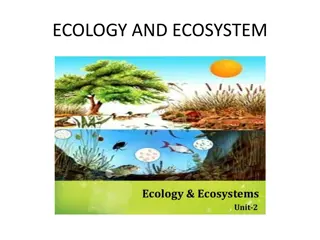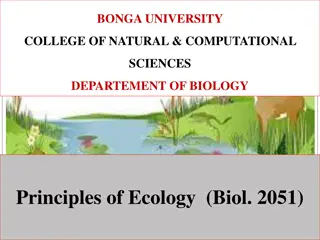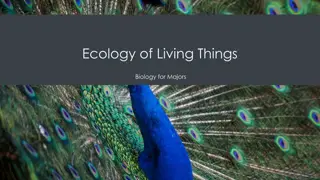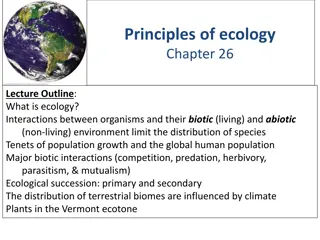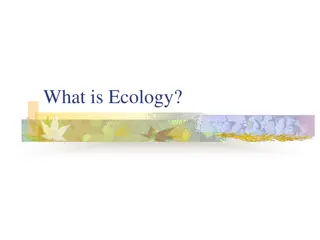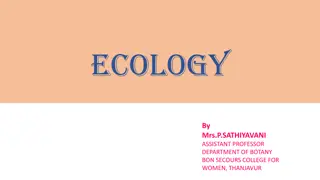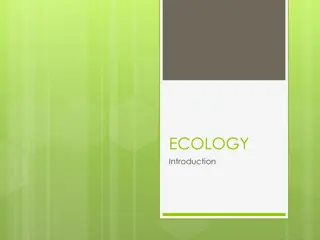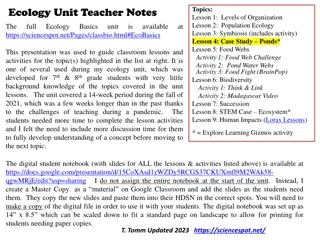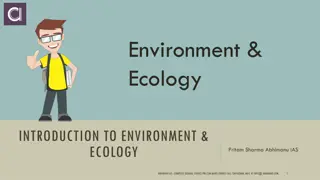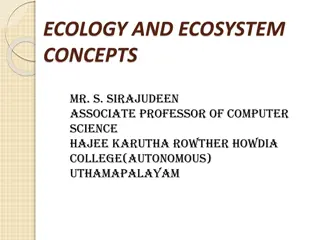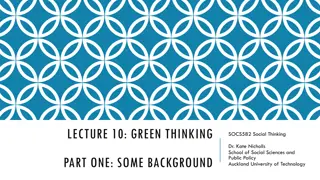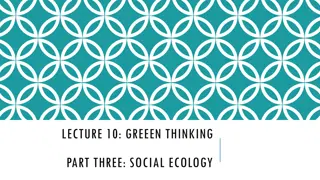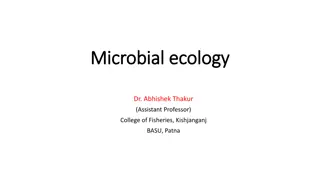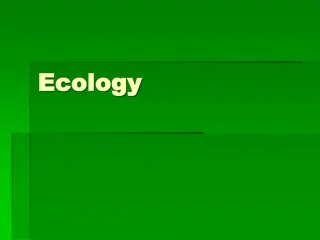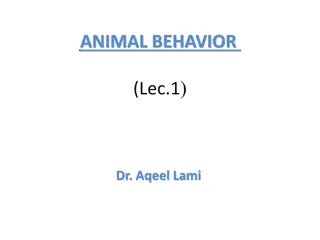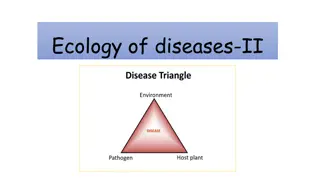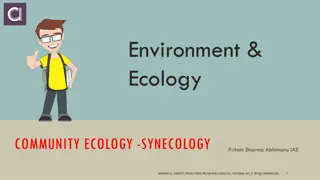Understanding Interactions in Ecology
Living things interact with their environment and each other in various ways, leading to concepts like population dynamics, limiting factors, and species interactions such as competition, coevolution, predator-prey relationships, and symbiosis. These interactions shape ecosystems and influence the survival and evolution of species.
Download Presentation

Please find below an Image/Link to download the presentation.
The content on the website is provided AS IS for your information and personal use only. It may not be sold, licensed, or shared on other websites without obtaining consent from the author. Download presentation by click this link. If you encounter any issues during the download, it is possible that the publisher has removed the file from their server.
E N D
Presentation Transcript
All living things interact with their environment, both biotic and abiotic Most living things produce more offspring than can survive
Most living things produce more offspring than can survive Populations cannot grow indefinitely The population can only be as big as the resources will allow The environment contains a finite amount of food, water, living space These factors are limiting factors because any one of these factors can limit the size of the population
The largest population that can be supported in a given environment When a population grows larger than its carrying capacity, limiting factors in the environment cause the population to decrease.
Four main ways that species interact with one another Competition Coevolution Predator/Prey Symbiosis
Can occur within populations and within communities Organisms try to use the same resources
Long-term change that takes place in two species because of their interactions with one another.
Prey - organism that gets eaten Predator organism that eats the prey Both predators and prey evolve in response to one another in order to survive
Close long-term relationship between different species in which at least one species benefits 3 types mutualism both species benefits ex coral and algae commensalism one species benefits, the other is unaffected ex sharks and remoras Parasitism one species benefits, the other is harmed Parasite the organism that benefits Host the organism that is harmed Ex- deer tick is parasite, deer is host



